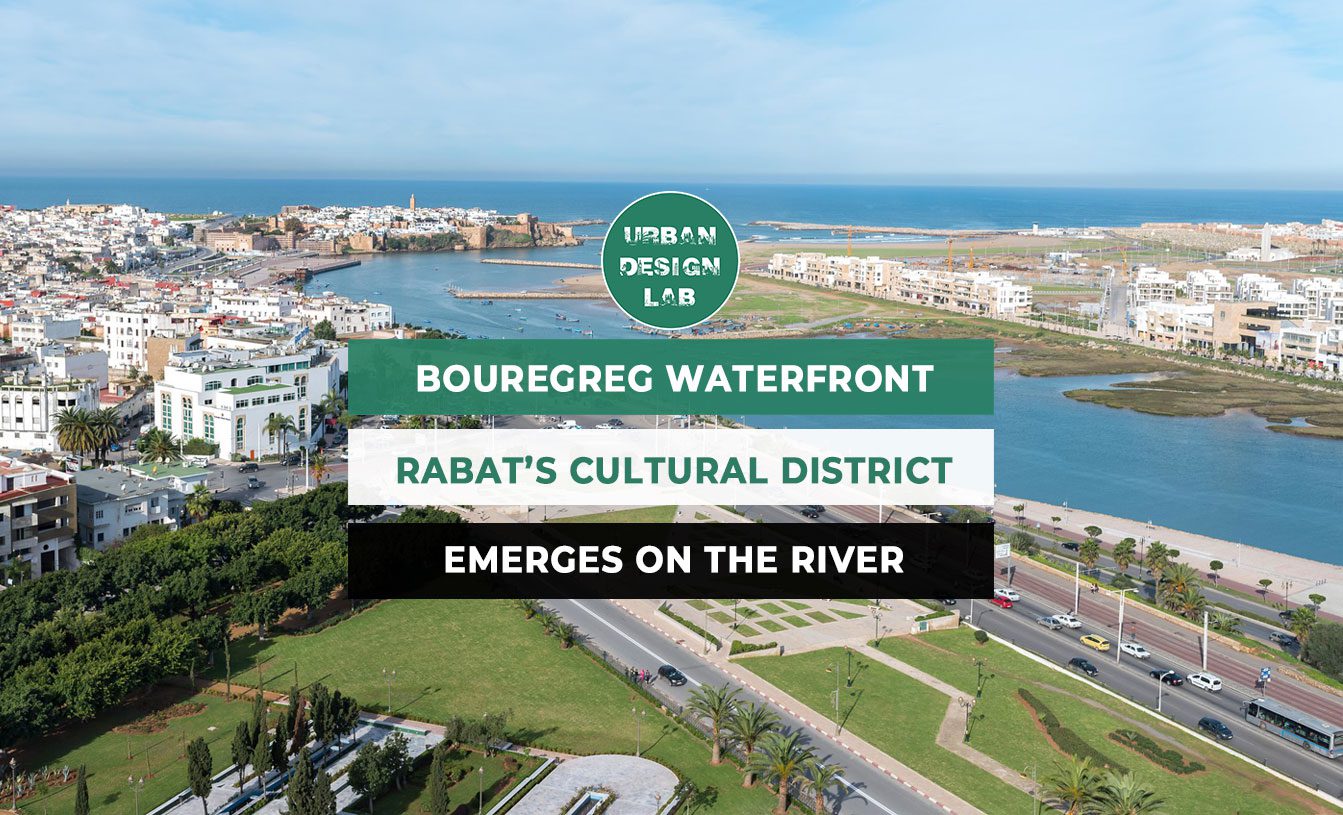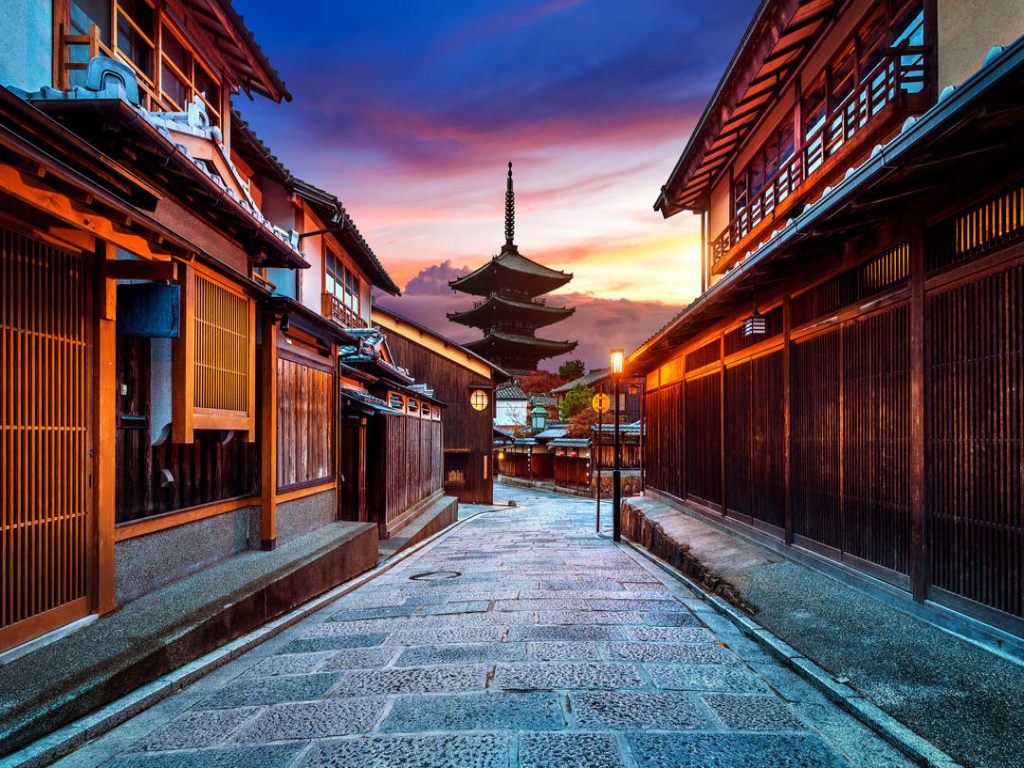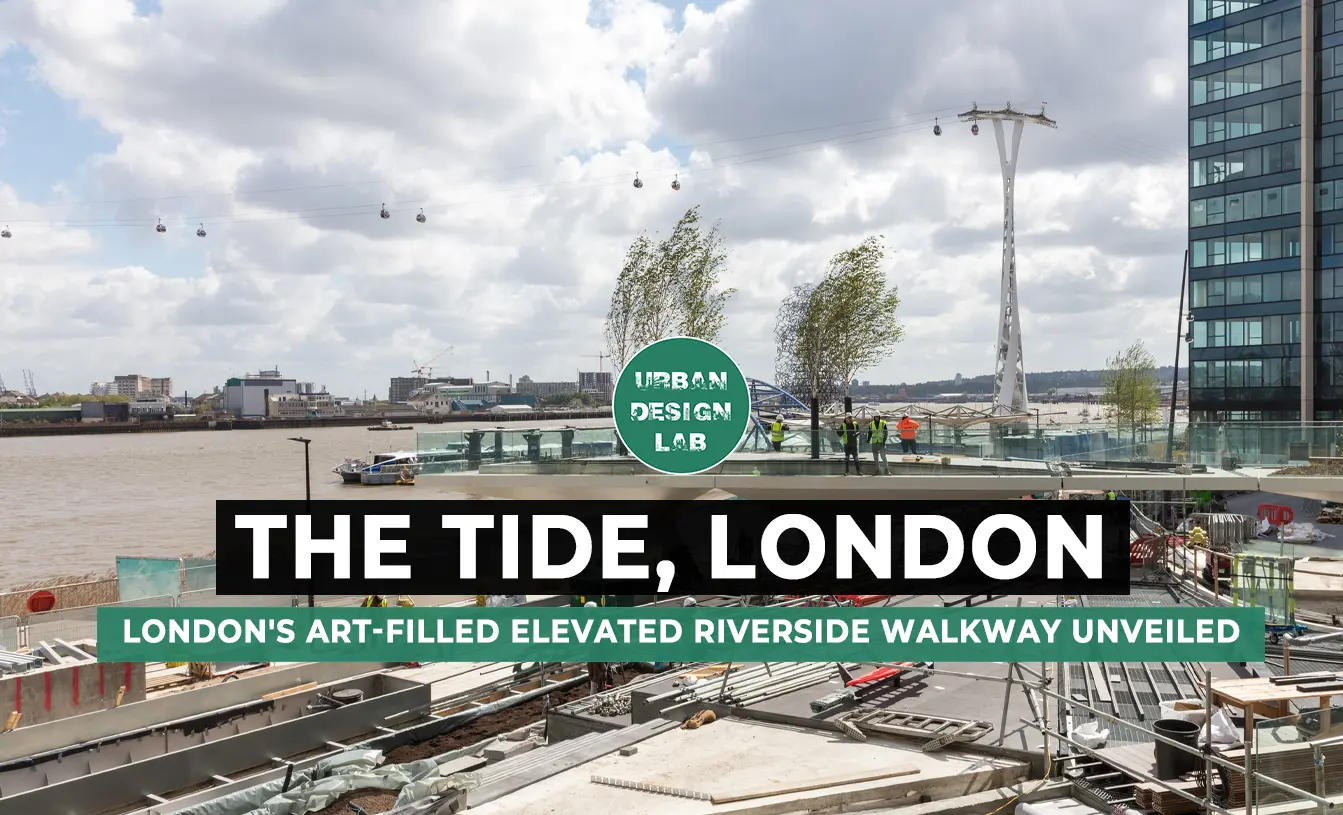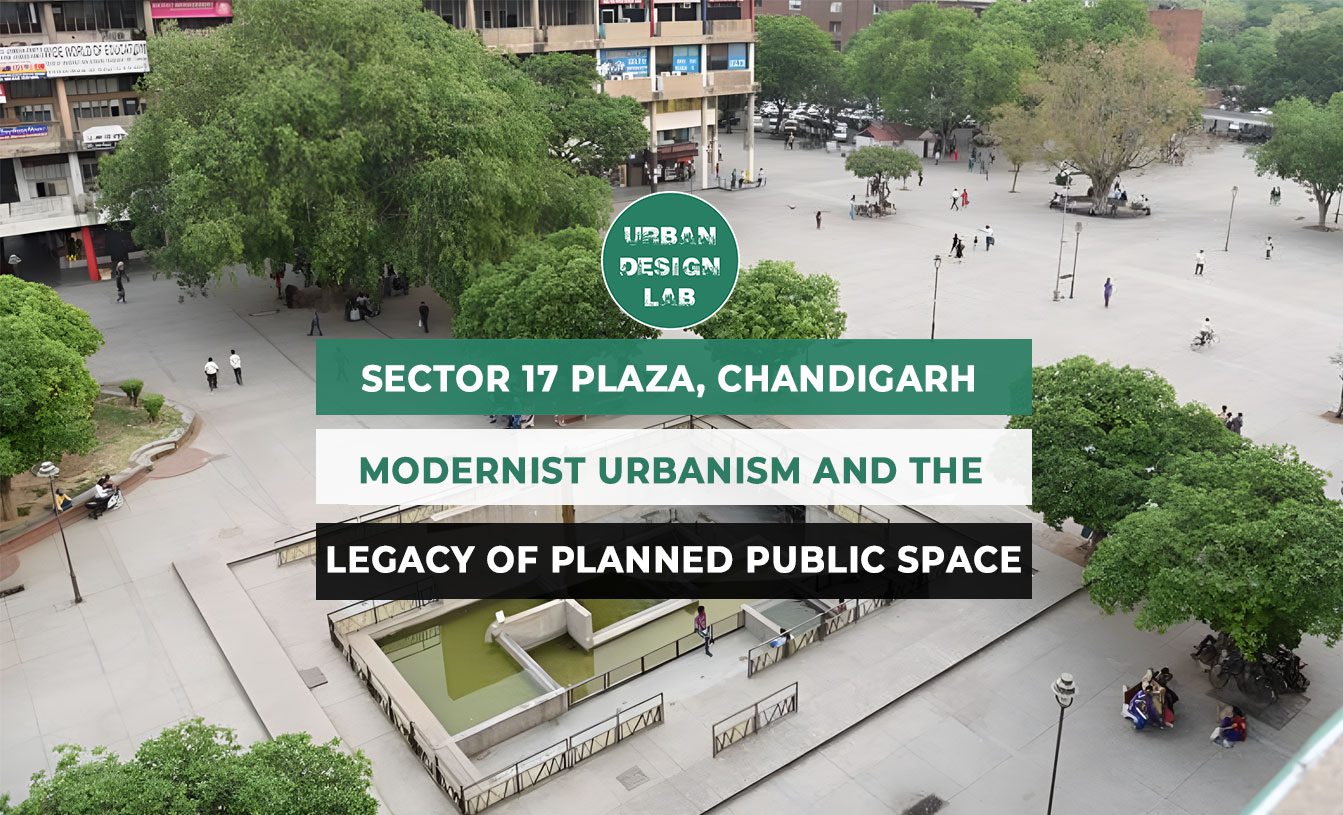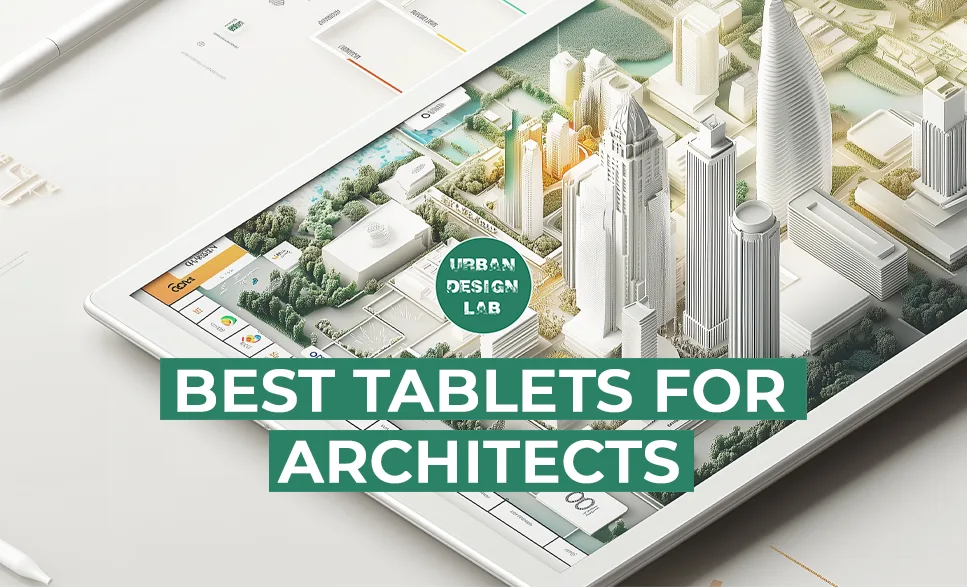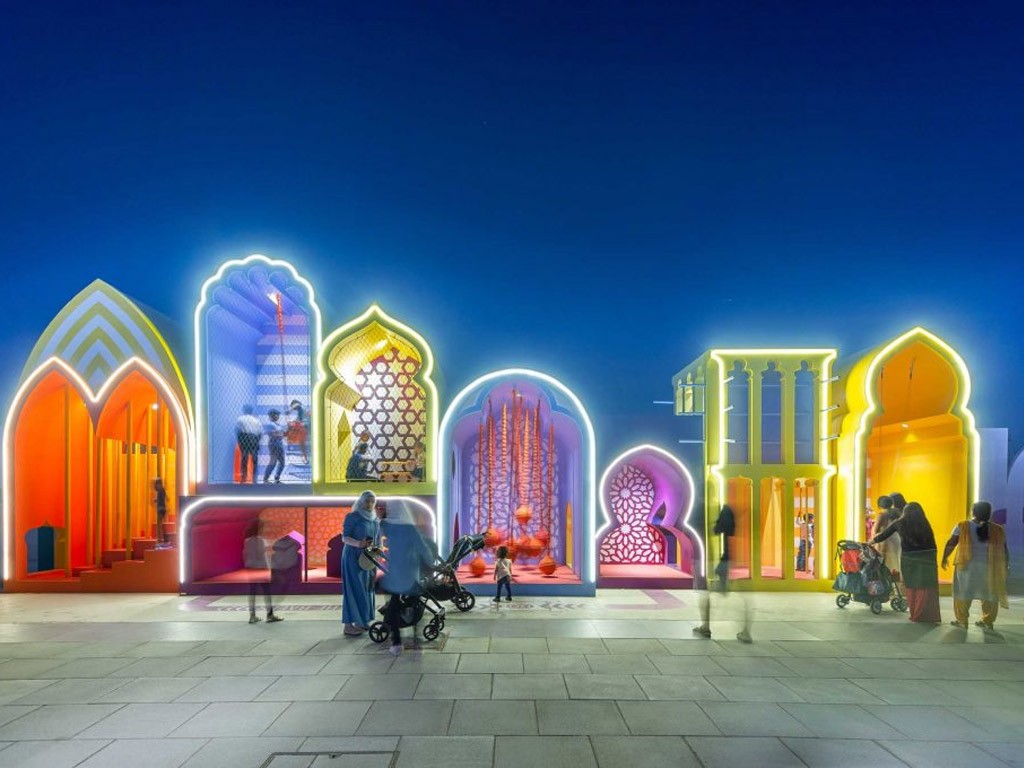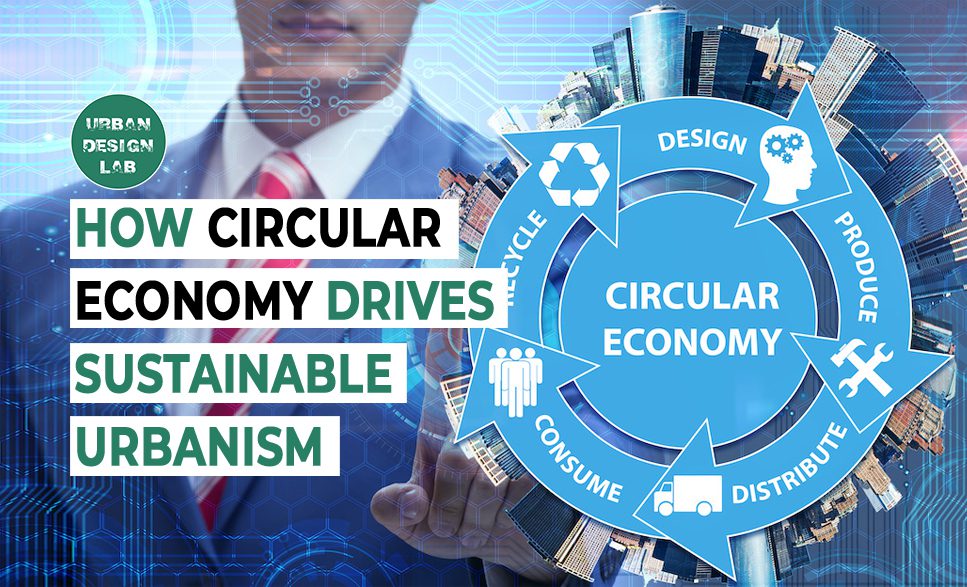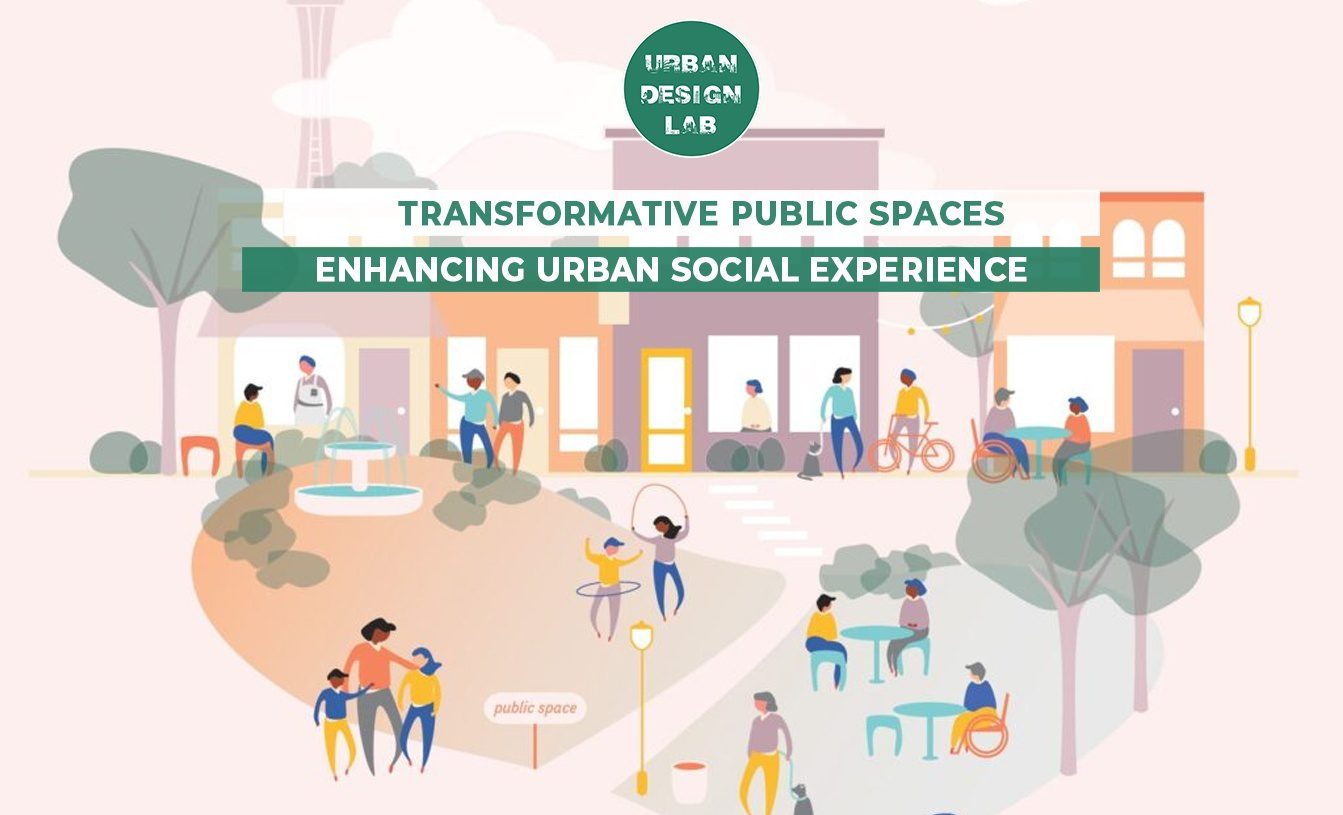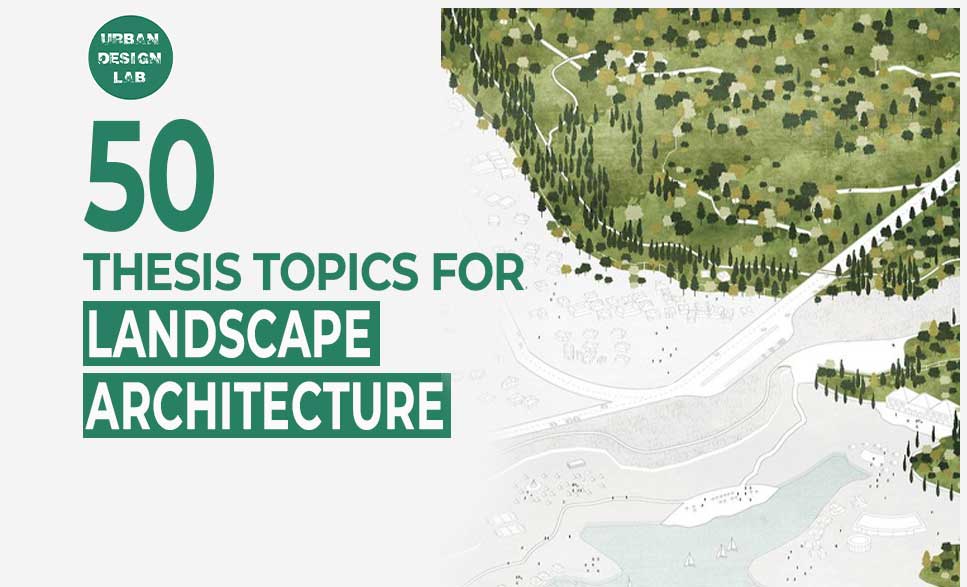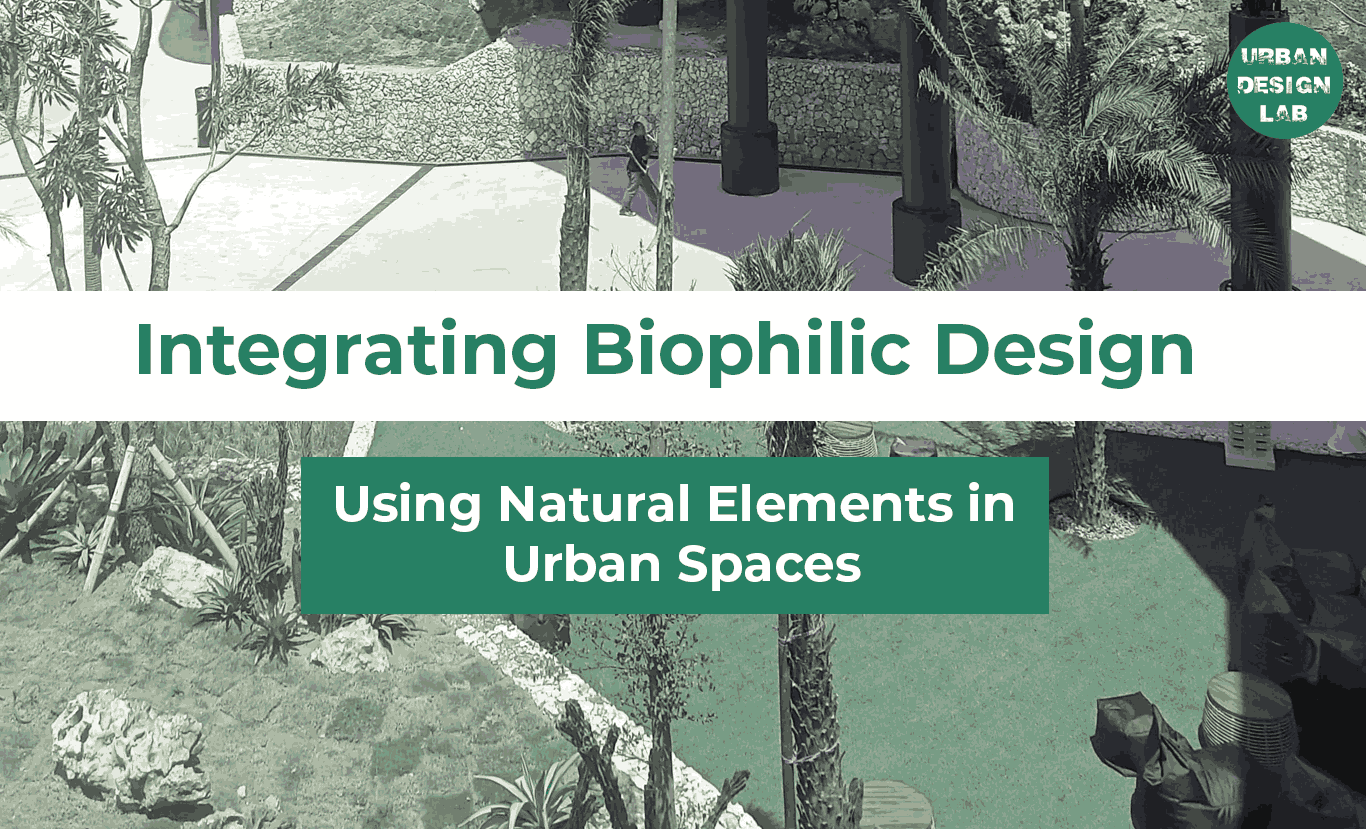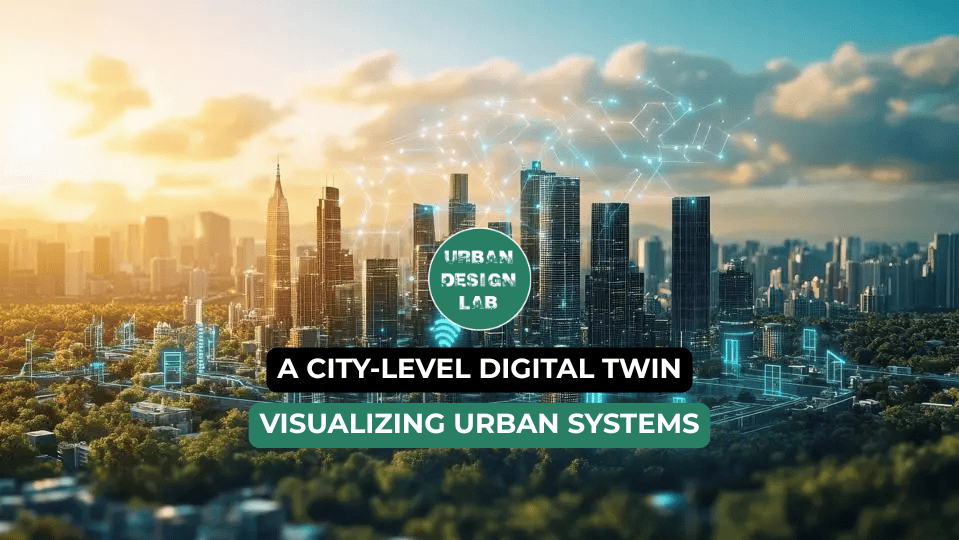
Chandni Chowk Redevelopment: Revitalizing Delhi’s Shahjahanabad with Historic Urban Renewal
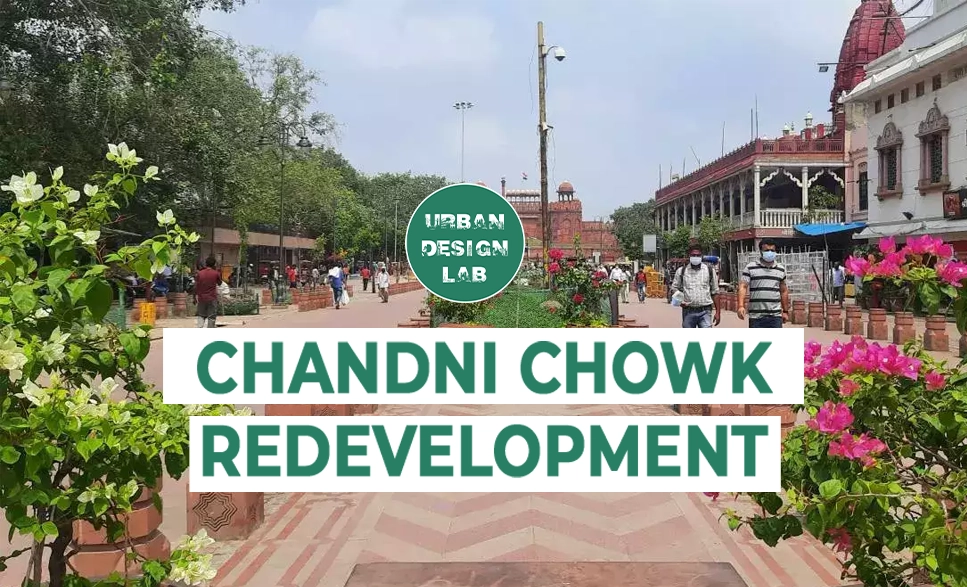
Shahjahanabad or the Walled City of Delhi, founded by Mughal emperor Shahjahan, continues to be an important cultural and commercial hub. Its Jama Masjid, Chandni Chowk, and Daryaganj areas are currently getting renovation for heritage conservation and beautification of public areas. Though a historic city, Shahjahanabad has many issues like overcrowding and environmental degradation. The Mass Rapid Transit System has, however provided much-needed relief from congestion.
Chandni Chowk has evolved from a marketplace and important buildings to a busy center of commerce and culture. High-density buildings can accommodate uses from street vending to commercial spillover and residential uses within the same locality.
From congested roads to filth and safety issues, Chandni Chowk has a host of problems that reduce the user-friendliness of this place.
Redevelopment will address these issues by giving travel sustainable solutions, reclaiming public spaces, and ensuring economic development. It encompasses Hybrid pedestrianization, Integrated utilities, Public amenities, Inclusive design, Comprehensive implementation.
It has returned an area with lesser congestion, better visual integrity, more local economic activity, tree preservation, and better pedestrian facilities.
The results in terms of easy accessibility, sustainable development, safety, and high heritage value make Chandni Chowk an exemplary urban space.
Introduction to Shahjahanabad (Walled city of Delhi)
Shahjahanabad, the historic walled city of Delhi, was founded by Mughal emperor Shahjahan (1592-1666) when he shifted the capital from Agra. Today, it remains a vital cultural and economic hub, with key areas such as the Jama Masjid precinct, Chandni Chowk, Esplanade Road, Daryaganj, and Lothian Road earmarked for revitalization to preserve its rich heritage and enhance public spaces.
Originally planned around landmarks like the Red Fort and Jama Masjid, Shahjahanabad followed a structured urban design with influences from geomorphological processes. Despite the Mughal empire’s decline in the 19th century, the city thrived as a vibrant trading center. The 1857 War of Independence marked a turning point, leading to significant destruction, particularly of Red Fort palaces. Post-independence, Shahjahanabad faced challenges like overpopulation and environmental decline, but with modern interventions such as the underground Mass Rapid Transit System, it continues to function as an essential commercial hub.
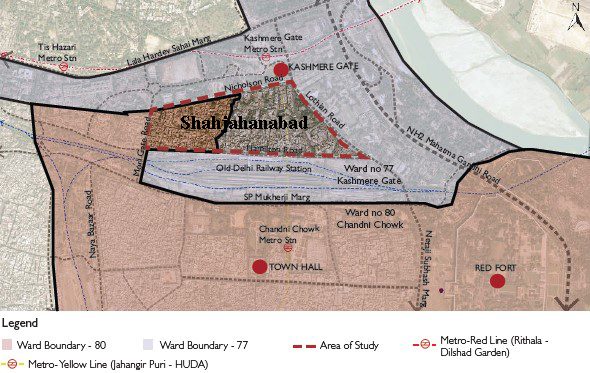
Historical background to Chandni Chowk
Chandni Chowk, originally named by Jahanara Begum, was designed as a central marketplace in Shahjahanabad. The layout was meticulously planned, featuring a division into three distinct sections separated by two central squares. The Faiz Canal, flowing through this area and shaded by trees, added to the charm of the marketplace. Noteworthy structures included the kotwali and a grand serai, both significant to the city’s administrative and commercial functions.
In the 19th century, British colonialists introduced landmarks such as the clock tower and Town Hall, further shaping Chandni Chowk’s landscape. Today, Chandni Chowk stands as a bustling epicenter of business and culture, marked by a dense array of shops, places of worship, and multi-storied buildings adorned with columns. This area remains vibrant, reflecting its historical significance and ongoing economic vitality.
The streets and open spaces of Chandni Chowk are alive with diverse activities. Street vendors offer a wide range of goods, while commercial establishments contribute to a lively spillover effect. Loading and unloading of goods are common, and the area even serves as a makeshift sleeping space for many at night. This dynamic environment showcases the blend of commerce, community, and daily life.
In addition to its commercial role, Chandni Chowk also functions as a residential space for many. Residents often perform everyday tasks such as sleeping, bathing, and working along the roadsides. Key activities include food distribution by Sisganj Gurudwara to the less fortunate, feeding pigeons around the Town Hall, and gathering spots for day laborers and goods trucks. Despite its challenges, Chandni Chowk remains a vital component of Shahjahanabad’s socioeconomic landscape.

Source: Website Link
Issues and challenges faced along Chandni Chowk stretch
The old, crowded area of Chandni Chowk in Delhi faces many problems such as traffic jams, fires and other forms of accidents, crime and safety concerns, pollution, chaotic market image and tangled utilities etc., contribute to making it unfriendly to users with no last mile transport solutions. These issues limit the economic potential of the market.
Therefore, it becomes more complex since different people from locals through city planners up to national governments are involved creating the matrix from which various stakeholders will draw their interests during its redevelopment process; these dynamics must be effectively managed if their efforts for change are going to succeed.
How Redevelopment address challenges?
- It provide efficient and sustainable travel solutions.
- Reclaiming large-scale public spaces
- Trigger economic development
- Involve multiple stakeholders
- Focus on comprehensive solutions
This project develop an organized secure environment in Chandni Chowk yet each step taken in it should not only aim at preserving its cultural/historical value but enhancing its economic growth as well as improving life standards for both locals and tourists alike.
Its success could serve as a benchmark for other similar projects and overall transform it into an iconic and inspirational model for other cities.
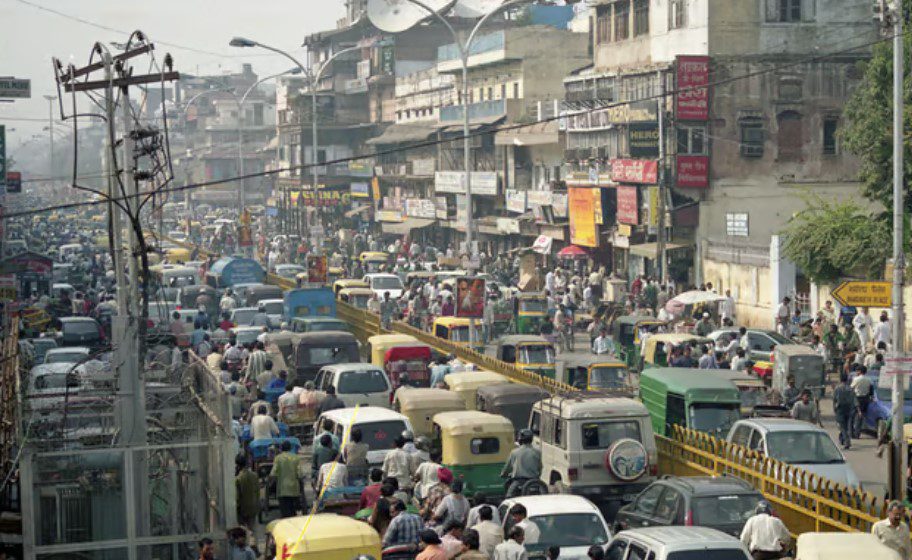
Chandni Chowk Redevelopment
Chandni Chowk redesign involves five main approaches, aimed to its substantial development.
1. Hybrid Pedestrianization: Emphasizes pedestrians and NMT by limiting the entry of vehicles from 9 am to 9 pm., loading/unloading from 9 pm to 9 am, with an exception for emergency vehicles, helps in minimizing congestion.
2. Integrated Utilities: A complementary utility network that comprises drainage, water pipes, sewer catch basins, electrical systems, waste management, fire services, CCTV, and cables has been developed, eliminates service scatter, and increases infrastructure resilience of Chandni Chowk.
3. Public Amenities: The renovation similarly encompasses supplying public facilities to enhance convenience and quality of service delivery to users. Hence, this is how a good public space is organized.
4. Inclusive Design Approach: The redesign is being carried out by adopting inclusive approach by transforming streets into a public space, prioritizes active mobility and opens the way for all that is residents with disabilities to enter the area.
5. Comprehensive Implementation: To ensure the project is completed successfully, the traffic will be arranged in a detailed traffic management plan, includes intersections design, entry and exit barricades location, phased scheduling, and the presence of enough parking facilities.
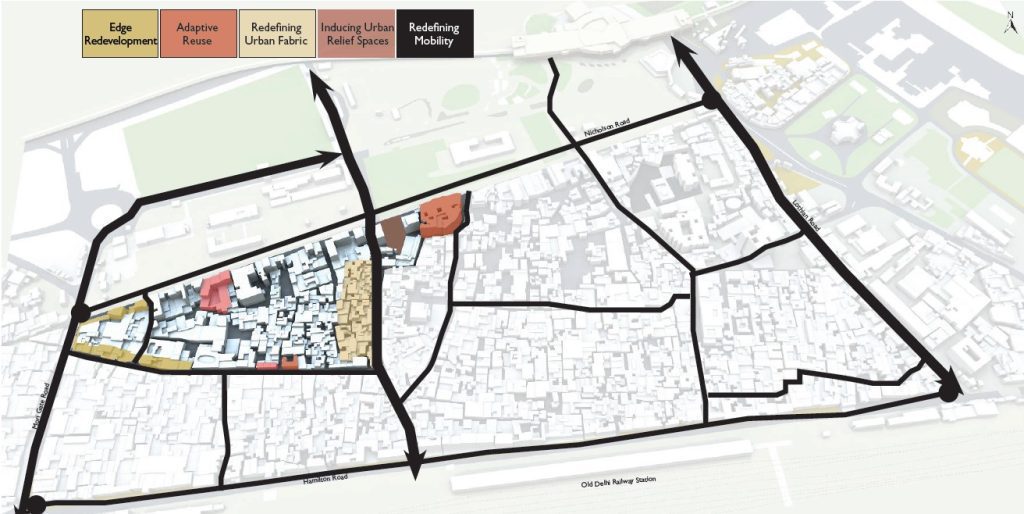
Impact and Outcome of redevelopment
The redevelopment of the Chandni Chowk stretch has positively impacted not only the environment but also the community.
Impact:
- Traffic Decongestion: Reduction in it made it more accessible.
- Visual Integrity: Area’s visual integrity has been restored and improved.
- Economic Development: Boost in business activity at the local level added to its economic growth.
- Reclaimed Public Space: Junctions have been renovated into throbbing plazas, adding public spaces.
- Tree Preservation: All existing trees were preserved.
- Pedestrian Facilities: Walkability/ pedestrian facilities were improved to help people move easily.
Outcomes:
- National Pride: Clean, organized, and beautiful urban space instilling a sense of pride in the nation.
- Easily Accessible: Designed as per comfort and accessibility of all the users at that area.
- Sustainable Development: Practices of sustainable urban planning have been implemented to bring in long-term benefits.
- Safe and Secure: There is an improvement in safety and security within the area.
- Heritage Value: The appreciation and preservation of heritage sites increase, adding to the cultural richness of the area.
Through the redevelopment of Chandni Chowk, a thriving, safe, and sustainable urban space can be achieved by striking a balance between history preservation and modern development.
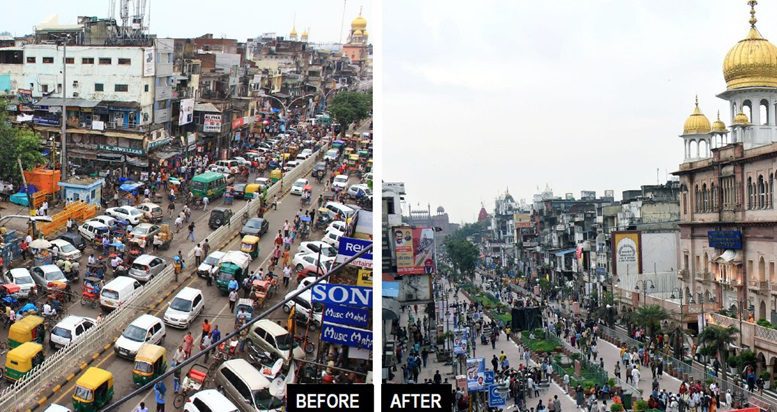
-1
-1
-1
-1
-1
Conclusion
The redevelopment of Chandni Chowk was sensitively done between retaining its historicity and making it relevant to modern-day urban needs. Addressing issues of traffic congestion, poor infrastructure, and environmental degradation can eventually make the area more access-friendly and better-looking. Providing pedestrian preference, enhancing public amenities, and integrating utilities, Chandni Chowk is fast emerging as the model of sustainable urban development.
Impact was clear in the renewing of public spaces, preserving historic trees, and massive boosts in local economic activities. In this effort to renew not just the face of the area but to inculcate a sense of national pride with clean, orderly, and beautiful urban spaces.
Results are profound: a healthier, safer, and more secure environment. Improved facilities for pedestrians and sustainable practices ensure long-term benefits; the enhanced heritage value brings with itself cultural richness to the area.
Its redevelopment acts as a benchmark for similar projects, proving that vibrant, thriving urban spaces that honor their historical roots and cater to contemporary needs can be created with careful planning and inclusive design. Such success can act as an inspiration to other cities to undertake similar transformations, thereby turning Chandni Chowk into an iconic model of urban rejuvenation.
References
- Arif Kamal, M., Vasanth, V. and Afzal Khan, M. (2024) ‘Urban Regeneration of Public Spaces and Pedestrian Streets in Commercial Area: Case of Chandni Chowk at Old Delhi, India’, American Journal of Civil Engineering and Architecture, 12(3), pp. 44–50. Available at: https://doi.org/10.12691/ajcea-12-3-1.
- Mohan, R. and Dasgupta, S. (2004) ‘STANFORD CENTER FOR INTERNATIONAL DEVELOPMENT Working Paper No . 231 Urban Development in India in the 21 st Century : Policies for Accelerating Urban Growth by Urban Development in India in the Twenty First Century : Policies for Accelerating Urban Growt’, World [Preprint], (231).
- Precinct, J.M. and Chowk, C. (2018) ‘Redevelopment of Prepared for Public Works Department, GNCTD by’.
- Rao, P.D.P.S.N. (2015) ‘CHANDNI CHOWK AND KASHMERE GATE Guidelines and Redevelopment Strategies’, p. 20.
- Sengupta, S. and Sen, A. (2022) ‘Untitled-Collection-1Fyno2C7-Re-Creating-Chandni-Chowk-4Mobti25Q2’, 13(2), pp. 47–53.
- SRDC (2014) ‘Revitalization of Shahjahanabad ( Walled City of Delhi )’, 6(000296268). Available at: http://srdc.delhigovt.nic.in.
- Sridhar, K.S. (2019) ‘Urbanisation in India’, Socio-Economic Change and the Broad-Basing Process in India, pp. 163–179. Available at: https://doi.org/10.4324/9780429316418-11.
- Turap, T. et al. (no date) ‘No 主観的健康感を中心とした在宅高齢者における 健康関連指標に関する共分散構造分析Title’, pp. 1–17.
- Urban, R. and Paradigm, S.N.E.W. (no date) ‘REDEVELOPING URBAN SPACES-A NEW PARADIGM FOR INDIA’.
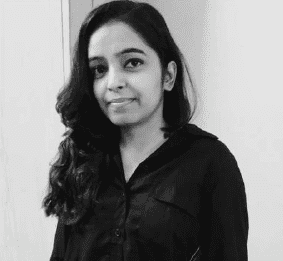
Meena Saini
Meena is a dedicated architect and urban planner celebrated for her innovative and sustainable design approach. A young professional, she combines technical expertise with imagination and inquisitiveness. Known for her transparency and adaptability, Meena offers creative, unconventional solutions to urban challenges. Her modesty belies a fast learner committed to excellence. Focused on enhancing urban environments through thoughtful, sustainable design, Meena is dedicated to making a significant impact in her field.
Related articles


Architecture Professional Degree Delisting: Explained

Periodic Table for Urban Design and Planning Elements


History of Urban Planning in India
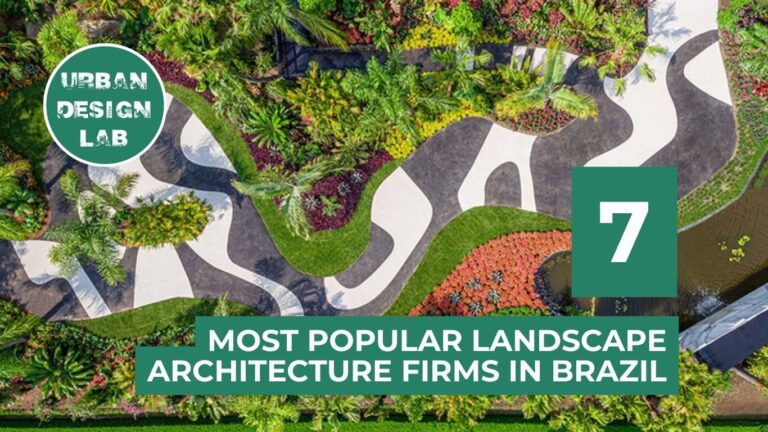
Top 7 Landscape Architecture Firms in Brazil You Should Know
UDL GIS
Masterclass
Gis Made Easy- Learn to Map, Analyse and Transform Urban Futures
Session Dates
15th-19th December 2025

Urban Design Lab
Be the part of our Network
Stay updated on workshops, design tools, and calls for collaboration
Curating the best graduate thesis project globally!

Free E-Book
From thesis to Portfolio
A Guide to Convert Academic Work into a Professional Portfolio”
Recent Posts
- Article Posted:
- Article Posted:
- Article Posted:
- Article Posted:
- Article Posted:
- Article Posted:
- Article Posted:
- Article Posted:
- Article Posted:
- Article Posted:
- Article Posted:
Sign up for our Newsletter
“Let’s explore the new avenues of Urban environment together “

























